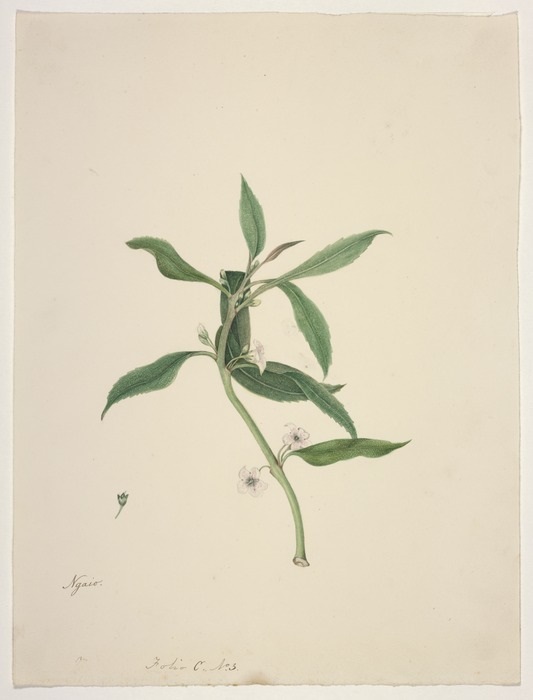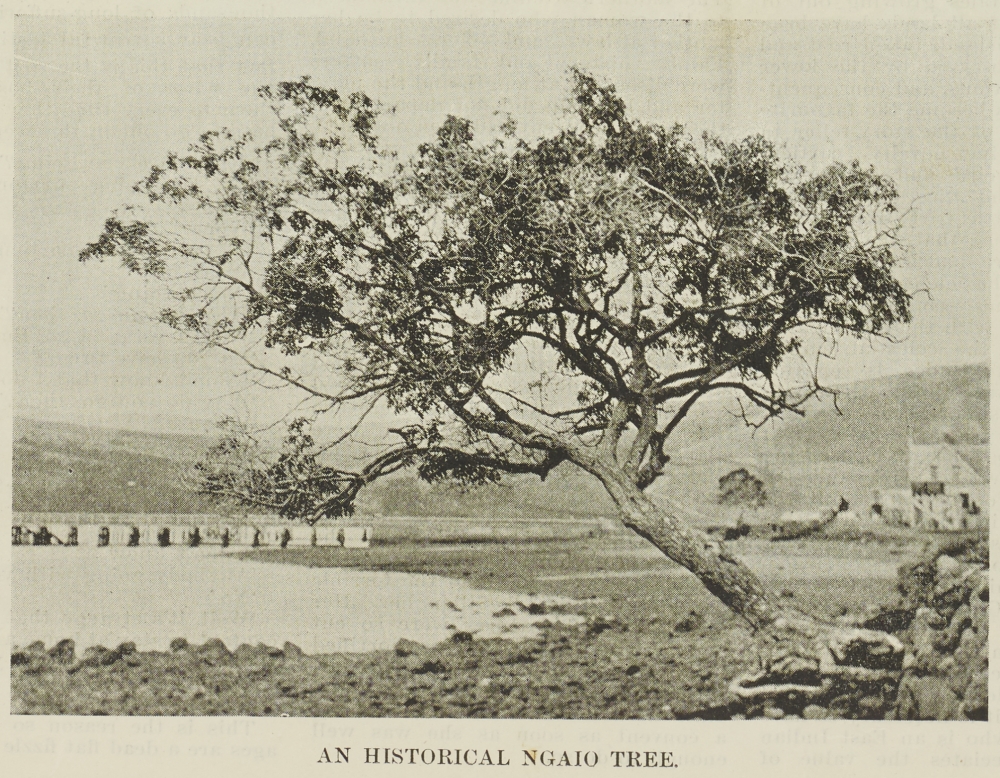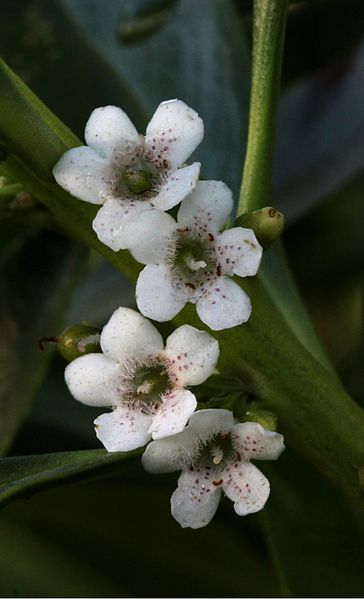





Formerly Ivey St, Ngaio St in Inglewood is named after the tree which flourished in the surrounding neighbourhood. There is also a Ngaio St in Strandon, New Plymouth.
The name Ngaio was also given to an inner suburb of Wellington. It has had a number of notable inhabitants, including James K Baxter. Also bearing the name was Ngaio Marsh. Known for her detective novels, she wrote mystery stories with a New Zealand flavour, and her books are still widely read.
Ngaio is a fast-growing evergreen shrub or small tree, and is known formally as Myoporum laetum. Dome-shaped at first, branches break off as it ages, and it appears distorted.
It grows to a height of 10 metres and carries white blossoms with purple spots. The fruit is a bright red drupe. The bark has a brownish furrowed look. The leaves contain small oil glands. The oil is said to repel mosquitoes and sandflies.
The plant was first collected by Europeans on Captain James Cook's voyage, and it is one of the plants recorded as a painting by Sydney Parkinson.
While Ngaio is usually a small coastal tree, there is a form which sprawls along the ground, with upright stems. This is found on Poor Knights Island and in the Coromandel. The drupes, or single fruits, are white on the Poor Knights version.
While there are about 30 species of Myoporum across Australasia, China and Japan, Ngaio is the only species in New Zealand. Not everybody loves Ngaio. The leaves contain a liver toxin which can cause sickness, and poisoning of stock still occurs.
It has been introduced to several other countries, including Spain, Portugal, Chile, and the United States. It is considered an invasive exotic species in California.
This story was originally published in the Taranaki Daily News.
Please do not reproduce these images without permission from Puke Ariki.
Contact us for more information or you can order images online here.